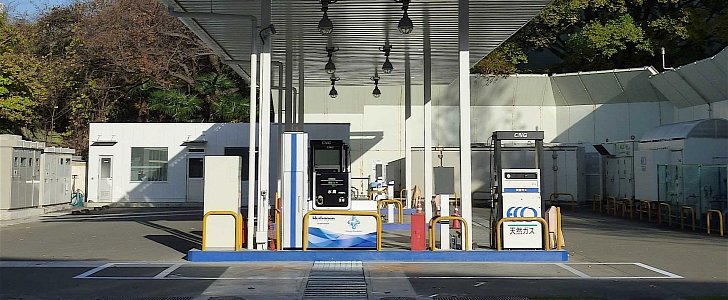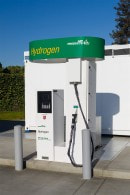The Japanese City of Fukuoka has managed to be the first to transform sewage into hydrogen and use it to fuel cars.
The accomplishment has come after a $12 million investment in the city’s wastewater plant. Automakers like Toyota and Mitsubishi, as well as the Kyushu University, were also involved in the research, engineering, development, and building work on the facility’s new feature.
Even though the station is only operated for 12 hours a day, it makes enough hydrogen to fuel 65 Fuel Cell Vehicles each day. According to the Star Advertiser, the plant could produce enough hydrogen to fuel 600 vehicles each day, once it manages to use all the biogas it generates.
The hydrogen obtained from this plant comes from biogas, a combination of methane and carbon dioxide. The latter elements originate from the breakdown of organic matter found in the sewage system. The technology is inherently renewable, and does not seem to depend on fossil fuels in any way, at least in the processing part.
Japan is ahead of everyone else in the field of hydrogen fuel cell vehicles, while Germany is coming in second from a significant distance. The Land of the Rising Sun already has two automakers that have revealed and launched (in some markets) production vehicles that operate on electric power obtained from hydrogen.
The country has a reported 80 fuel stations for hydrogen vehicles, which is four times more than what the state of California has developed so far. Meanwhile, Germany is in the middle, with a reported 50 hydrogen fuel stations.
However, one of Japan’s hydrogen fuel stations is powered by a city’s sewage plant, an unmatched feat in the field of eco-friendly motoring. The same biogas could also be used in other countries to source methane, which can be utilized as fuel for both conventional vehicles that have been converted to run on it, as for home appliances.
As Yoshikazu Tanaka, the chief engineer of the Toyota Mirai project has explained, sewage sludge is “completely untapped today as a fuel source,” which means that the technology is promising, and it has the possibility of bringing “ultimate self-sustainability” to communities.
Even though the station is only operated for 12 hours a day, it makes enough hydrogen to fuel 65 Fuel Cell Vehicles each day. According to the Star Advertiser, the plant could produce enough hydrogen to fuel 600 vehicles each day, once it manages to use all the biogas it generates.
The hydrogen obtained from this plant comes from biogas, a combination of methane and carbon dioxide. The latter elements originate from the breakdown of organic matter found in the sewage system. The technology is inherently renewable, and does not seem to depend on fossil fuels in any way, at least in the processing part.
Japan is ahead of everyone else in the field of hydrogen fuel cell vehicles, while Germany is coming in second from a significant distance. The Land of the Rising Sun already has two automakers that have revealed and launched (in some markets) production vehicles that operate on electric power obtained from hydrogen.
The country has a reported 80 fuel stations for hydrogen vehicles, which is four times more than what the state of California has developed so far. Meanwhile, Germany is in the middle, with a reported 50 hydrogen fuel stations.
However, one of Japan’s hydrogen fuel stations is powered by a city’s sewage plant, an unmatched feat in the field of eco-friendly motoring. The same biogas could also be used in other countries to source methane, which can be utilized as fuel for both conventional vehicles that have been converted to run on it, as for home appliances.
As Yoshikazu Tanaka, the chief engineer of the Toyota Mirai project has explained, sewage sludge is “completely untapped today as a fuel source,” which means that the technology is promising, and it has the possibility of bringing “ultimate self-sustainability” to communities.





